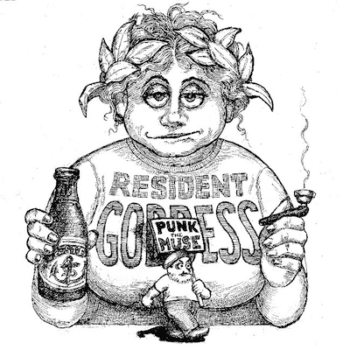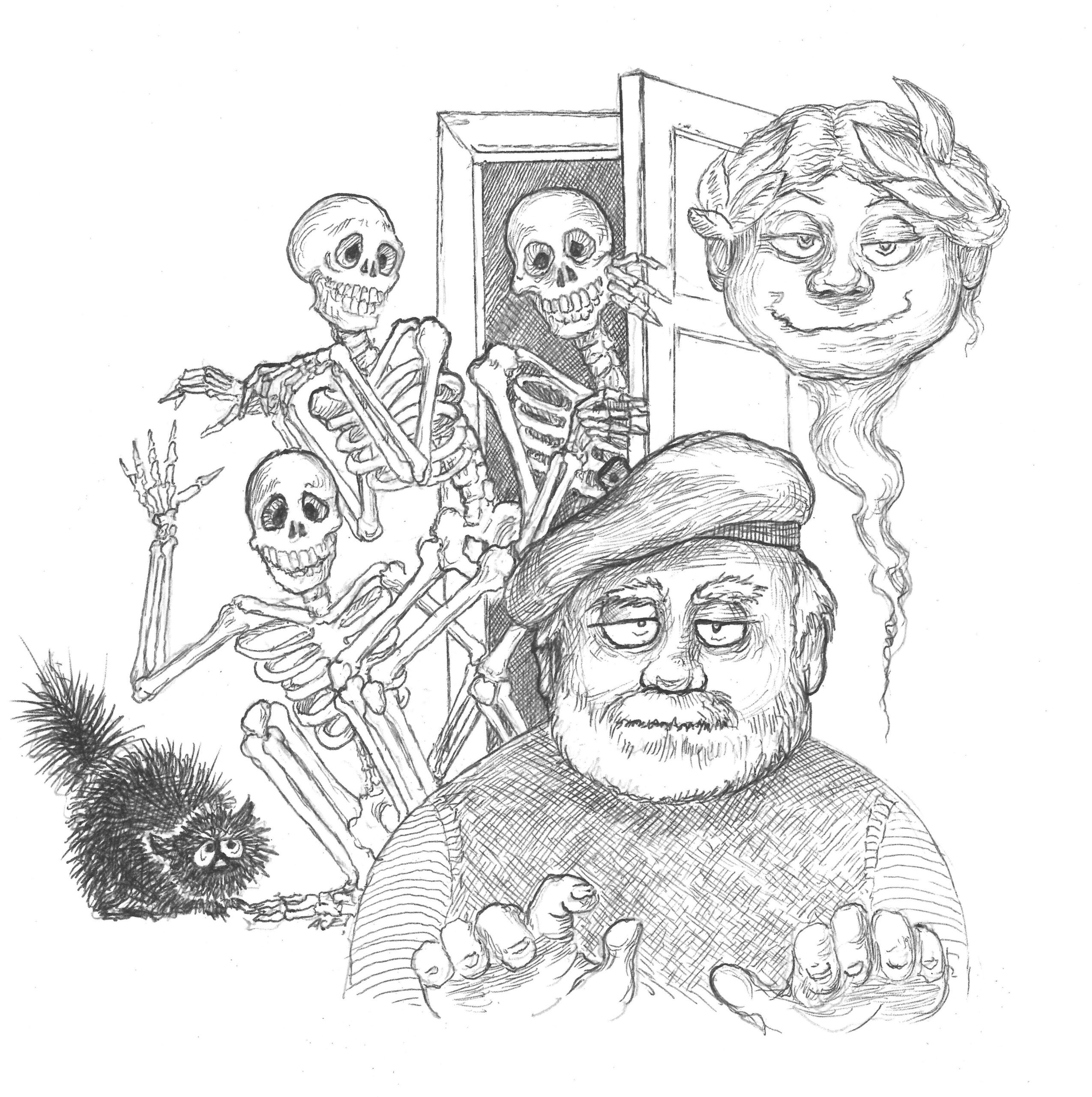
One recent hot weekday afternoon, I told my partner—the guy who created the “Punk the Muse” logo and draws its cartoons—that I wanted to get out and about. We’d been sitting at home too long. Moon’s Handbook for Northern California revealed an abandoned mine, with a ghost town and an old Western cemetery, a half hour’s drive from our home by the Carquinez Bridge.
There is something about old mines, doorways into the earth, that grabs my imagination. Going underground evokes death, of course, but also the unconscious, the sleep before the dawn, the nurturing womb, the deep place where seeds germinate into growth, and, you know, all that jazz…
I don’t just go for walks.
So off we go to the mines. There are rolling, desolate hills, brown from the drought, covered with weeds and occasional wildflowers. A haunting view of the old cemetery—recognizable as the only patch of green—can be seen ahead on a hilltop. On a slope to our right, a sizable flock of goats feeds on a field of thistle.
Now that evokes a bit of East Bay history: more than a hundred years ago, Basque immigrants came to California and began practicing their ancient goat-herding profession. Even today, their 21st century descendants keep herds of goats, available for a fee to clear the dry hills of thistle and help avoid grass fires.
I wanted to photograph the herd and this was the result.
All I wanted was a nice picture of some bucolic goats, and I got an accidental selfie instead.
And isn’t that the way of it? You think you’re recording one thing, but like it or not, willy-nilly or billy goat, other things creep in and there you are: revealed.
All art, certainly all good art, contains accidental selfies.
Another way to say the same thing: you can’t write well without using your own voice. Childhood trauma or yesterday’s horse race—tell the story authentically and the writer is revealed. If not, the result will have the animation of a stone.
But we resist revealing ourselves. We’ll hide from our readers in a thousand subtle disguises. When it comes to making art, bullshit is the default setting. Getting past the bullshit, revealing those unflattering selfies, is a big part of becoming an artist.
My teacher Jack Grapes, an expert in helping writers’ find their voice, uses many methods to lure his students out of their hiding places. One of the most effective is what he calls the “transformation line.” Jack encourages students to write randomly, casually, describing anything they like. The subject doesn’t matter. What he is looking for is the sentence or moment that he calls the “transformation line” and I call the “accidental selfie.” These are phrases (often including the word “I”) that reveal something about the speaker that may have nothing to do with the surface content of the piece. Jack recommends that, upon discovering such a sentence or phrase, the writer set aside the surface content, and instead massage that sentence to tease out its hidden emotional life. This is where we sink our claim to authenticity, exploring the accidental selfie. This is the path that leads from the mundane surface to the deep underground. This is where we bring what is hidden to the surface.
Whether a recipe for pickled cucumbers or Crime and Punishment, writing that doesn’t connect to the depths is a lie.
Hide less; reveal more—with subtlety, of course. All art is confessional art. Just ask the secret goats in a ghost town by a mine on the eastern edge of the San Francisco Bay one hot autumn afternoon.
***
Rumpus original logo and artwork by James Lorenzato, aka Argyle C. Klopnick (ACK!).
***
“The Storming Bohemian Punks The Muse” was originally developed as a column under the editorship of Evan Karp at Litseen. An earlier incarnation of this work can be found there, along with many other interesting things.





